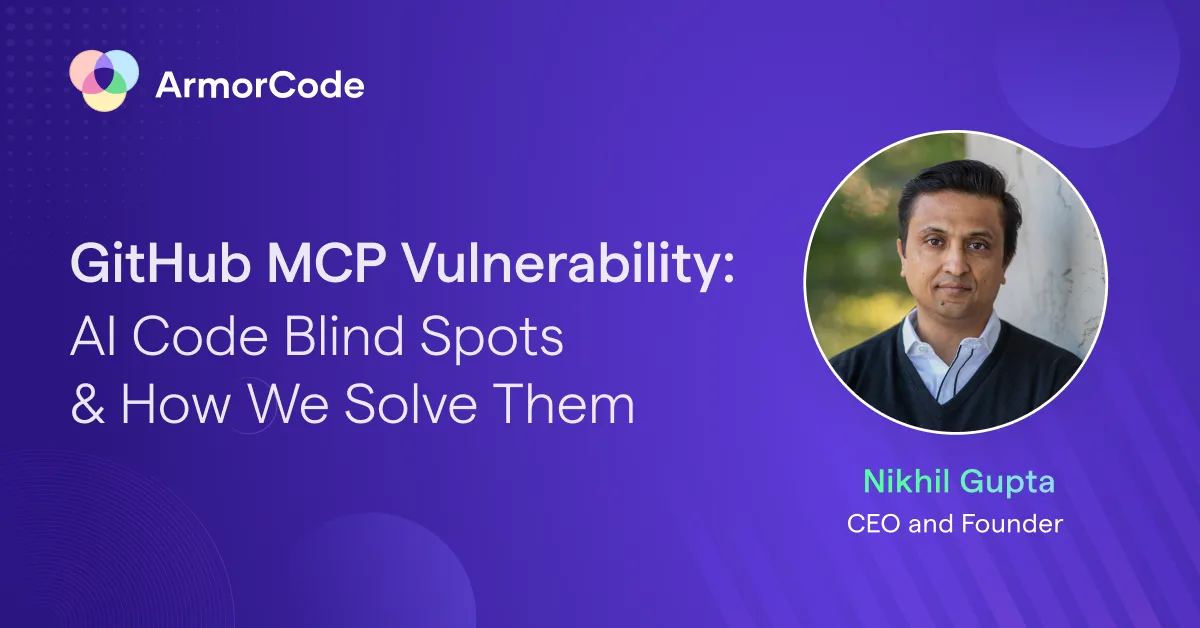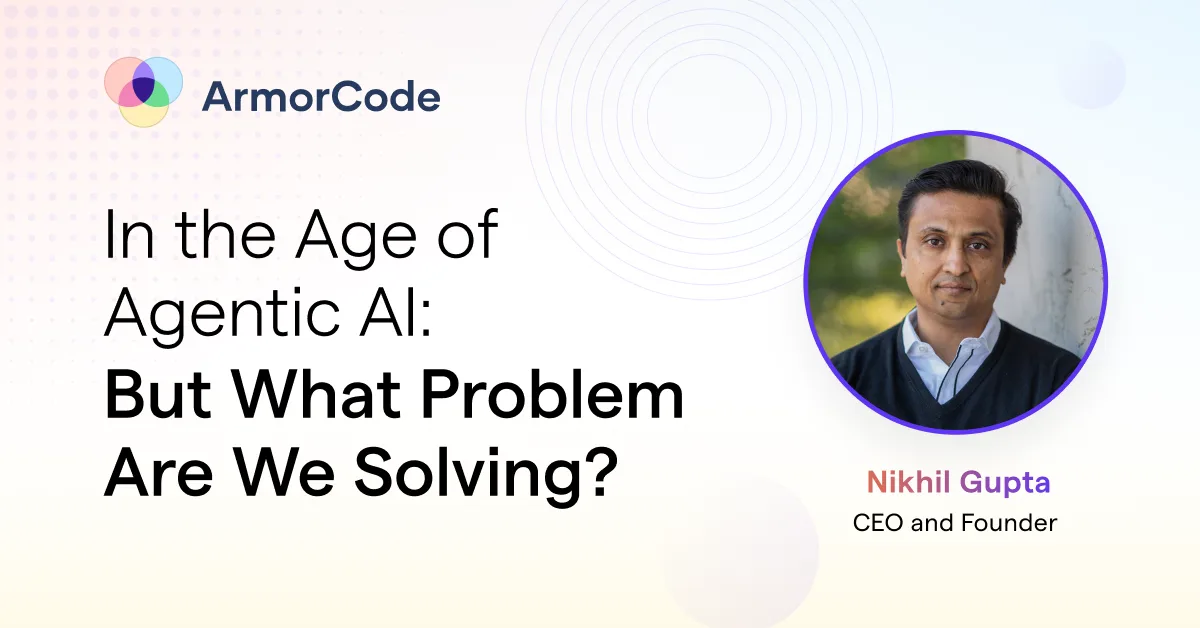GitHub MCP Vulnerability: AI Code Blind Spots & How We Solve Them

Another day, another critical vulnerability discovery—but this one hits particularly close to home for every developer and security team out there. The recent GitHub Model Context Protocol (MCP) server vulnerability isn’t just another CVE to add to your backlog. It’s a stark reminder of something we’ve been saying for years: your code repositories are treasure troves of hidden risks, and most organizations have no idea what’s lurking inside them.
The GitHub MCP Wake-Up Call
The vulnerability discovered in GitHub’s MCP server implementation is a perfect example of how quickly our development ecosystem can introduce new attack vectors. Here we have a protocol designed to enhance AI-human collaboration in development workflows—something that should make us more secure and efficient—yet it has become a potential gateway for malicious actors via simple prompt injection.
But there’s an even bigger story here: the rise of AI-generated code is fundamentally changing our risk landscape. As development pipelines become more interconnected and AI assistance becomes ubiquitous, we’re seeing an explosion of code that developers didn’t write themselves—and often don’t fully understand. AI coding assistants are generating everything from simple functions to complex infrastructure definitions, and this code is flowing directly into production systems.
Here’s what really gets me fired up about this: this vulnerability represents exactly the kind of blind spot that’s plaguing organizations everywhere. How many teams knew they were running MCP servers? How many understood the security implications of AI-generated infrastructure-as-code (IaC) in their repos? How many could quickly identify which repositories contained AI-generated components, which developers, and which assets were potentially affected?
I’m willing to bet the answer for most organizations is: not many.
The Real Problem: Code Repositories as Black Boxes
This GitHub MCP incident perfectly illustrates why we built ArmorCode AI Code Insights. Every day, developers are pushing hundreds of commits, deploying cloud-native applications, spinning up containers, and defining infrastructure-as-code. The velocity is incredible—and absolutely necessary to stay competitive.
But while we have mastered the art of moving fast, we’ve created a massive blind spot in the process. Code repositories have become black boxes, hiding critical information that security teams desperately need:
- What’s actually being built? Most security teams can’t quickly answer what languages, frameworks, or cryptographic implementations are living in their repos, let alone which portions were AI-generated and might carry inherited biases or vulnerabilities.
- What assets are hiding in the code? Microservices, APIs, containers—they’re all defined in code but invisible to traditional asset inventories. When AI generates these definitions, tracking becomes even more difficult.
- Who owns what? When a vulnerability like the MCP issue surfaces, good luck figuring out which developer is responsible for remediation, especially when AI tools generated the problematic code.
- What could impact us the most? Material code changes that could introduce new attack vectors are happening constantly, but most teams have no systematic way to identify them, particularly when AI is contributing to significant code changes across multiple repositories.
How ArmorCode AI Code Insights Changes the Game
This is exactly why we’re so excited about ArmorCode AI Code Insights. It’s not just another security tool—it’s the solution to the fundamental visibility problem that incidents like the GitHub MCP vulnerability expose.
Asset Discovery: Finding What’s Hidden
Our Asset Discovery capability would have provided early visibility any MCP implementations hiding in your codebase. We inspect code repositories to reveal exactly what’s being built, discovering assets like containers, APIs, and microservices that are defined in Infrastructure-as-Code and created at runtime. No more surprises when vulnerabilities like this surface.
Cloud-to-Code Correlation: Knowing Who Owns What
When the GitHub MCP vulnerability was announced, teams scrambled to figure out who was responsible for remediation. Our Cloud-to-Code Correlation eliminates this chaos by automatically identifying the developer responsible for a container and the security issues. We connect the dots between runtime findings and their source code owners, enabling faster, more precise remediation.
Code Repository Classification: Understanding Your Risk
Our classification engine analyzes repository contents to identify instances of MCP usage, quantify risk and enables you to ensure you have the correct controls in place. It would identify AI frameworks, languages, and data classifications, adding tags that enable smart prioritization. When a vulnerability affects specific technologies or frameworks, you’d know instantly which repos are at risk.
Material Code Change Detection: Staying Ahead of New Risks
Perhaps most importantly, our Material Code Change Detection flags significant changes that materially alter functionality or introduce new dependencies, like implementing MCP servers or integrating new AI-generated components. In an age where AI can generate substantial code changes in minutes, this capability becomes absolutely critical. It helps address potential security gaps before they become headlines, whether the code came from human developers or AI assistants.
The Bigger Picture: Making Security Keep Pace with Innovation
What excites me most about ArmorCode AI Code Insights isn’t just that it would have helped with this specific GitHub MCP issue—it’s that it fundamentally changes how we approach application security in a world of AI-accelerated development.
The reality is that AI isn’t just changing how we write code; it’s changing the entire risk equation. When developers can generate complex infrastructure definitions, API implementations, and integration code with simple AI prompts, traditional security approaches fall short. We need solutions that can keep pace with both human creativity and AI-generated complexity.
We’re not asking development teams to slow down. We’re not adding another scanning tool to their already overwhelming stack. Instead, we’re providing the crucial context that turns their existing security investments into powerhouses of actionable intelligence.
Our AI-powered ASPM Platform, backed by insights from over 25 billion processed findings and trusted by 175,000+ security practitioners and developers, doesn’t just tell you what’s broken—it tells you why it matters, where it came from, who owns it, and what else it impacts.
The ArmorCode Advantage: Context Drives Action
Here’s what encourages me the most: while our competitors are busy building more scanners or adding more noise to your security alerts, we’re solving the fundamental problem. We’re turning those opaque code repositories into organized, risk-tagged, visible, and actionable resources.
When the next vulnerability drops (and trust me, there will be a next one), ArmorCode customers won’t be scrambling in the dark. They’ll have:
- Complete visibility into what’s in their repos and what it builds
- Clear ownership mapping from findings back to the responsible developers
- Intelligent prioritization based on real business impact and risk
- Automated workflows that turn insights into immediate action
The Future is Bright (and Secure)
The GitHub MCP vulnerability serves as a reminder that in our fast-moving DevSecOps world, visibility and context are everything. But I’m not worried—I’m energized. Because for the first time, organizations have the technology and intelligence to truly understand and secure what matters most in their application landscape.
At ArmorCode, we’re not just building another security tool. We’re building the foundation that lets security keep pace with innovation. We’re ensuring that the next time a critical vulnerability surfaces, our customers aren’t asking “What do we have that’s affected?” They already know.
That’s the power of AI Code Insights. That’s the power of context. And that’s how we’re securing the future, one repository at a time.
Ready to transform your code repositories from hidden risks to known and manageable assets? Learn more about ArmorCode AI Code Insights with a customized demo. Because when you know what’s in your repo, you can secure what’s most important.



